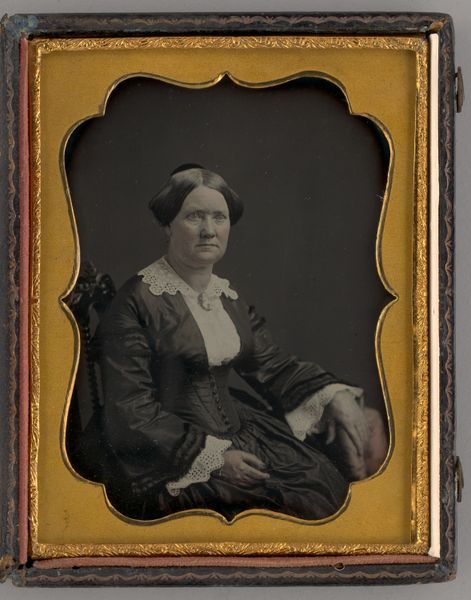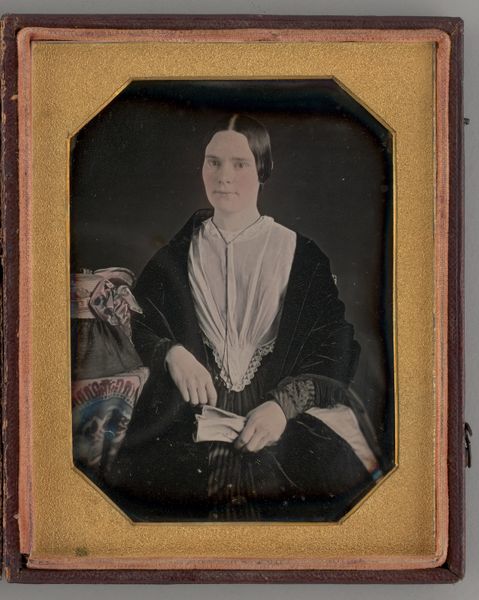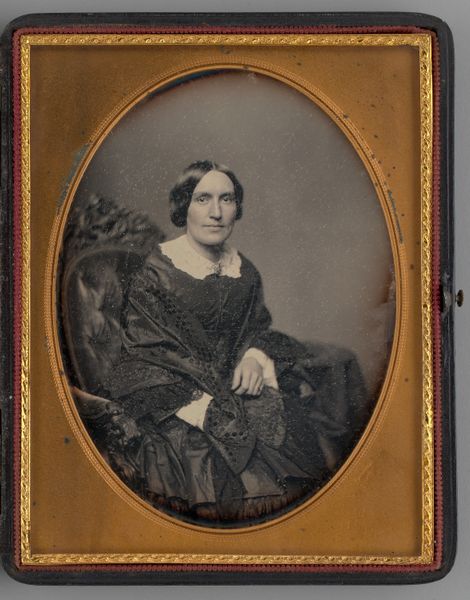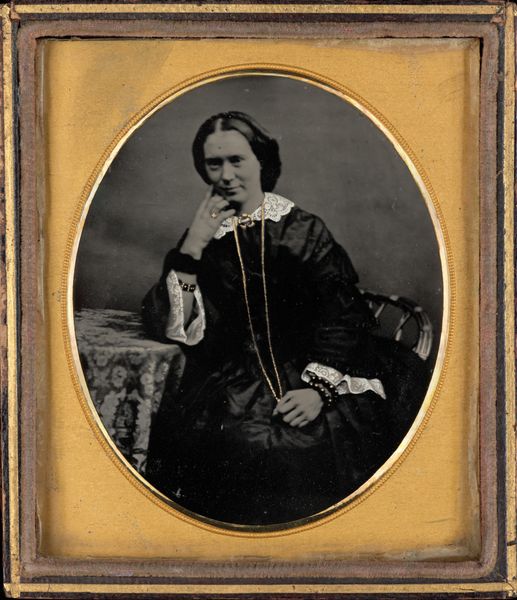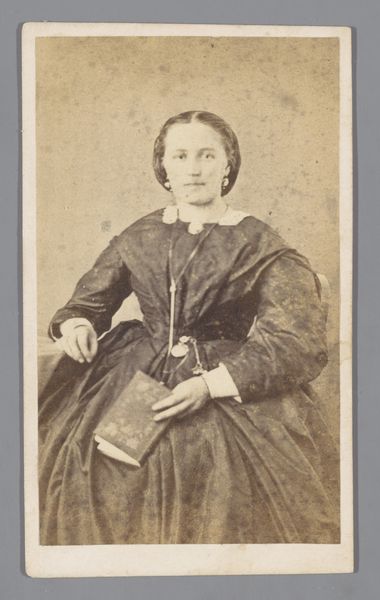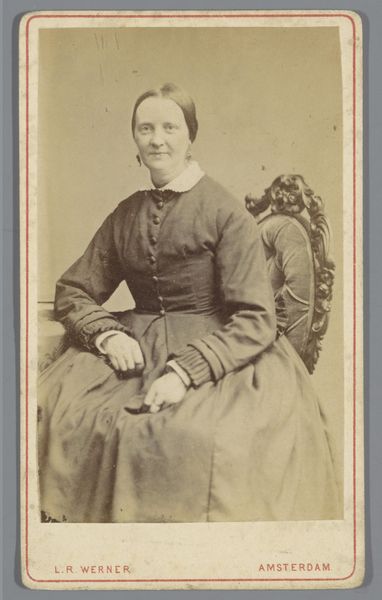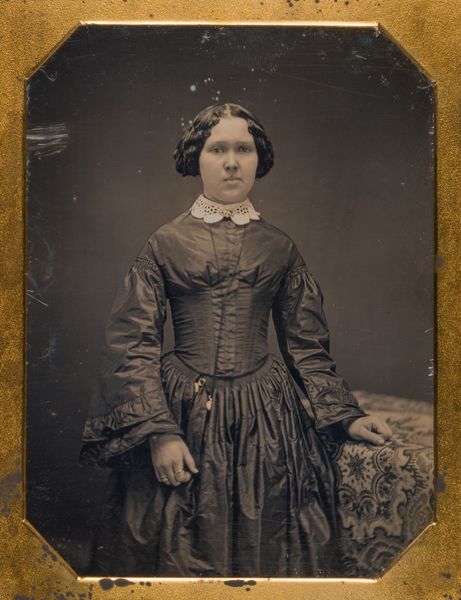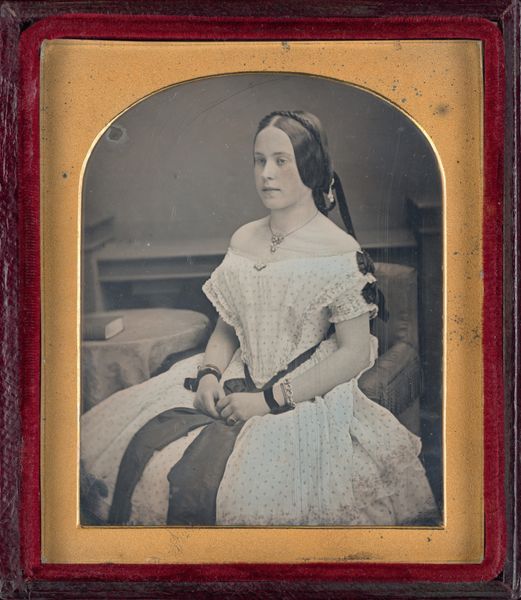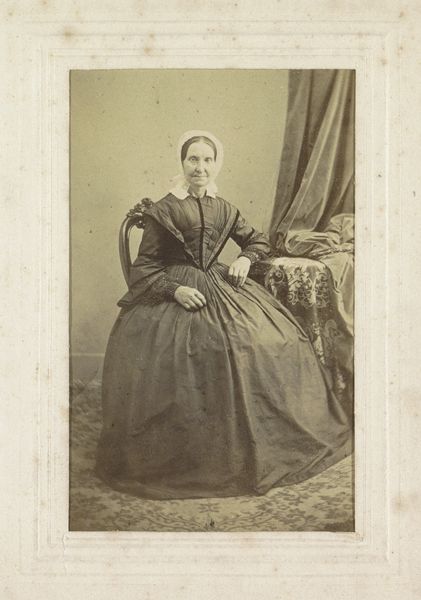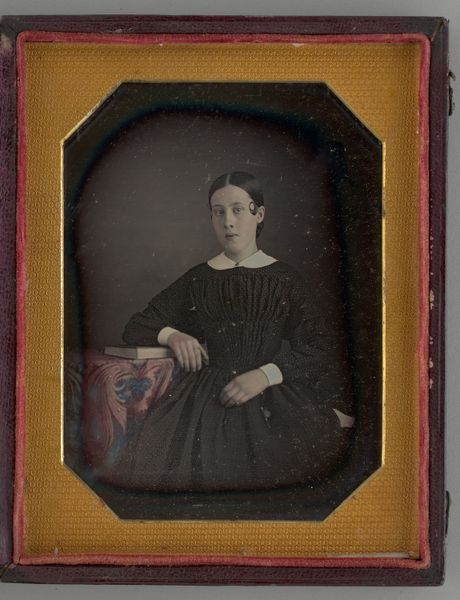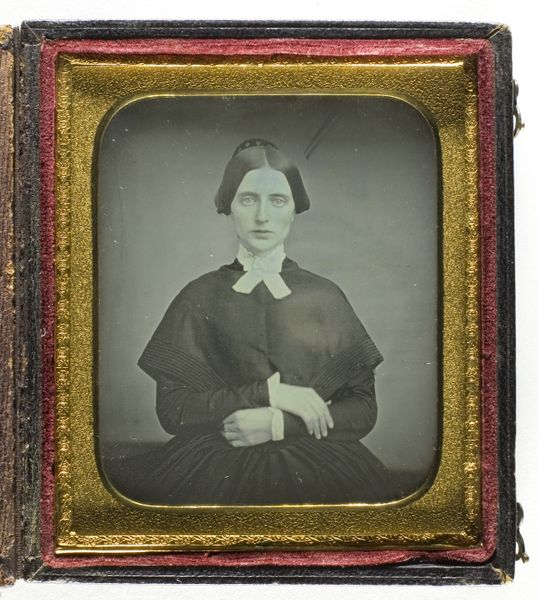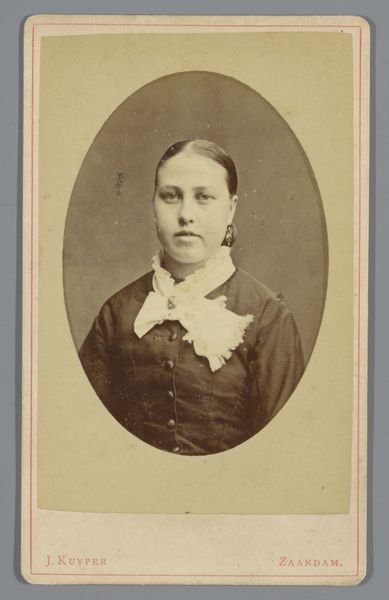
Dimensions: image (visible): 9.5 × 6.8 cm (3 3/4 × 2 11/16 in.) mat: 10.7 × 8.1 cm (4 3/16 × 3 3/16 in.) case (closed): 12.07 × 9.84 × 2.06 cm (4 3/4 × 3 7/8 × 13/16 in.)
Copyright: National Gallery of Art: CC0 1.0
Curator: This is an extraordinary example of a mid-19th century daguerreotype, a photograph titled "Portrait of a Woman," dating back to approximately 1855, author is unknown to us. Editor: It’s striking, isn’t it? Her gaze is so direct, and the dark dress against the lighter backdrop creates such a solemn and perhaps melancholic feeling. The framing even feels quite heavy and constricting, almost mirroring a sense of Victorian-era confinement. Curator: Indeed. Daguerreotypes were a relatively new and exciting technology at this time, enabling the burgeoning middle class to have their likeness captured. A fascinating democratization of portraiture when compared to painted portraits, which remained an activity mostly exclusive to aristocratic and affluent segments of the population. The stern posture and the lack of overt expression align perfectly with the period's emphasis on decorum and restraint. Editor: What I see goes beyond simple representation, though. The daguerreotype technique itself, with its mirrored surface, makes it more than just an image of her—it almost feels like an echo of a presence, a ghostly double preserved in time. Notice the careful arrangement of her hands, one adorned with what seems to be a decorative bracelet, and the other gently resting, each conveying distinct symbolic elements. Curator: The sitter's garments also provide clues to her socio-economic status. A dress of that volume and with such detailing would signify a certain degree of financial comfort. The dark color could, in some circles, indicate mourning; a ubiquitous symbol, perhaps, of Victorian culture, in many social settings of that era. However, more research needs to be performed for an educated diagnosis. Editor: Absolutely, the careful staging hints towards status and adherence to cultural codes, but the human element is also so palpable. Her eyes almost betray a deeper emotional complexity, a longing perhaps? Also the use of decorative motifs as floral pattern, as commonly interpreted in popular tradition symbolizes both beauty and mortality reminding the viewer of nature’s cycle. Curator: Ultimately, images such as these permit a fleeting peek into an era of stringent social constructs as this. This portrait provides a glimpse of individual human experiences frozen in time for us. Editor: It also leaves us with questions. What was her story? The image serves as a testament to both the constraints and the enduring spirit of those who navigated this earlier, complex age.
Comments
No comments
Be the first to comment and join the conversation on the ultimate creative platform.
